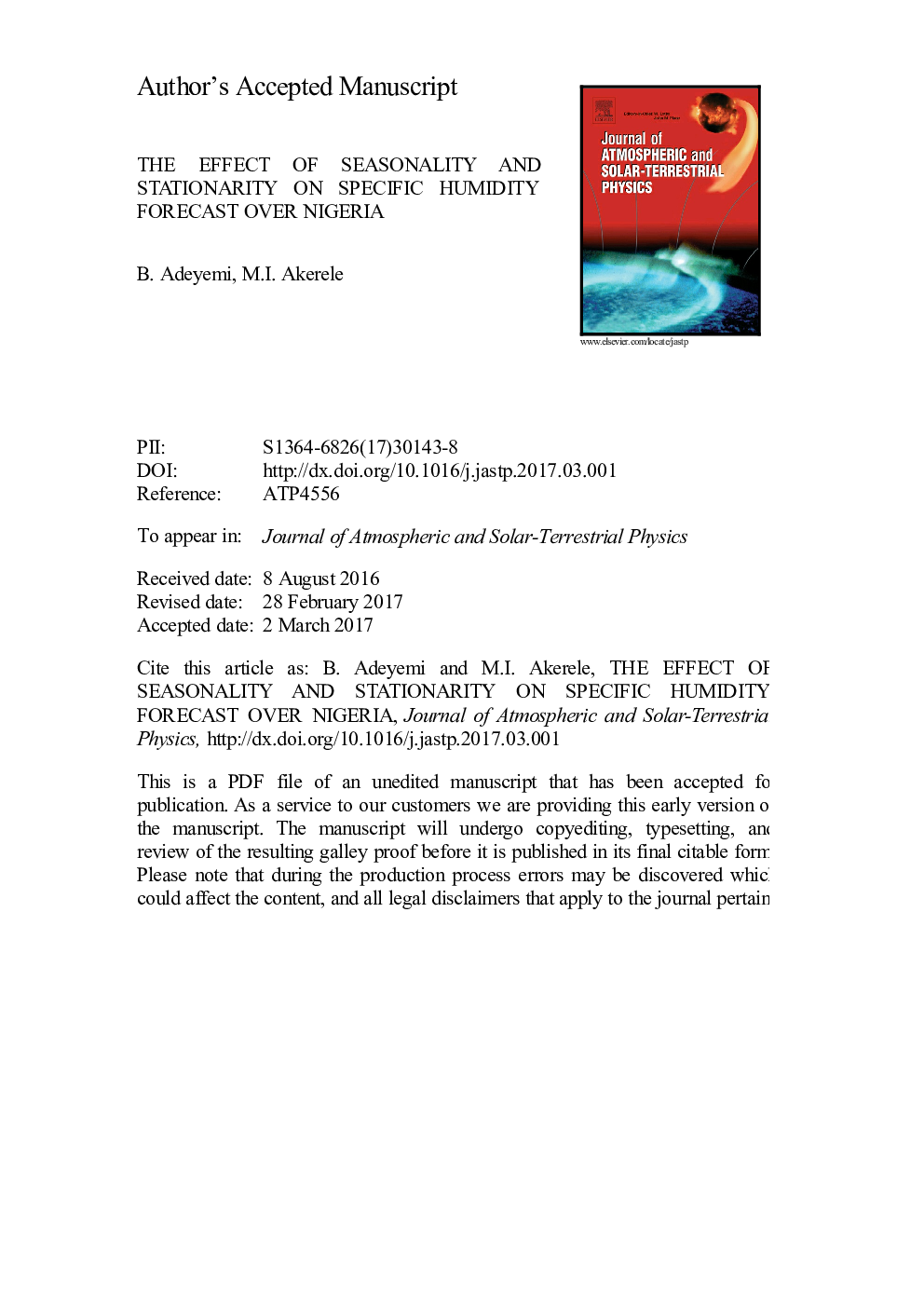| Article ID | Journal | Published Year | Pages | File Type |
|---|---|---|---|---|
| 5487502 | Journal of Atmospheric and Solar-Terrestrial Physics | 2017 | 40 Pages |
Abstract
This paper investigates the importance of seasonality and stationarity of climatological data to effective forecast of a meteorological parameter - the specific humidity, 'q'. This was done by computing q using monthly datasets of temperature and relative humidity from twenty carefully selected stations for twenty-six (26) years (1970-1995). The data were retrieved from the archives of the Nigerian Meteorological Agencies. The data were analysed to examine its seasonality as well as stationarity which are considered to be the basic requirements for good and accurate forecasting in climate studies. The stations were grouped into four climatic regions namely: the Sahel, Guinea Savanna, Rainforest and Derived Savanna regions. It was found that stations from the Guinea Savanna and Sahelian regions show more seasonality and stationarity compared to stations in Rainforest and Derived Savanna regions. Forecast was then carried out using three techniques which are: the ordinary Autoregressive model, Harmonic Analysis and Exponential Smoothing modelling techniques. These were analysed and evaluated using series of statistical error analysis methods. Exponential smoothing technique, which incorporates the seasonal components of the data into its model, was found to give the most accurate and reliable results with minimal statistical errors, re-iterating the importance of seasonality and stationarity in effective climate forecast.
Related Topics
Physical Sciences and Engineering
Earth and Planetary Sciences
Geophysics
Authors
B. Adeyemi, M.I. Akerele,
